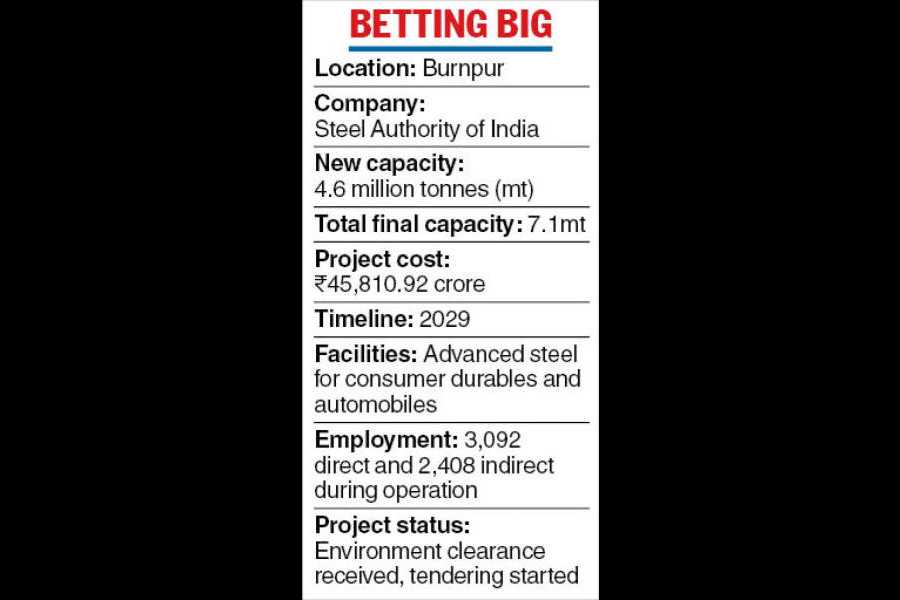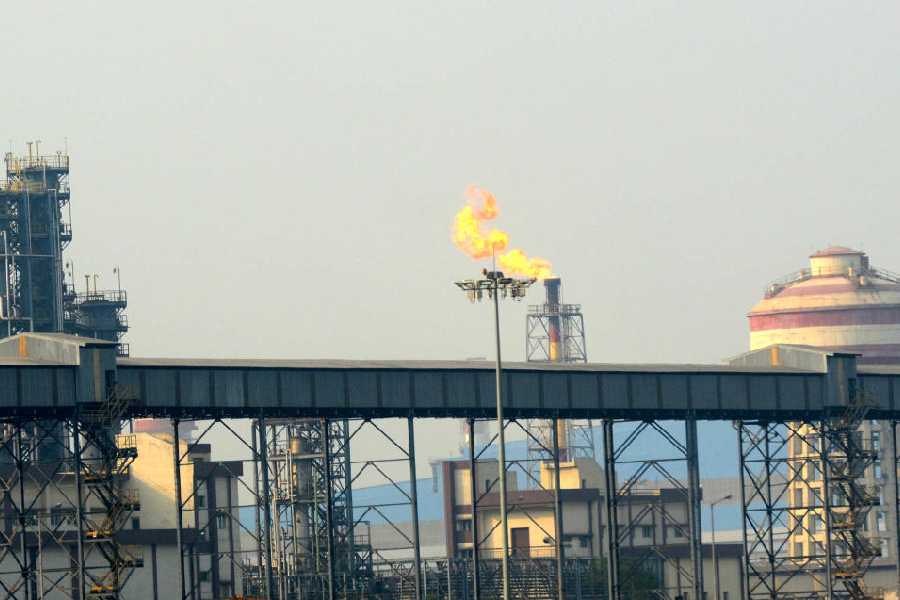Public-sector behemoth Steel Authority of India Limited (SAIL) has kicked off the expansion and modernisation of its IISCO Steel Plant at Burnpur, marking what could become the largest industrial investment in a single project in Bengal.
The company has started the tendering process for the project after receiving environmental clearance from the Union ministry of environment, forest and climate change on June 4.
The project, estimated to cost ₹45,810.92 crore, will involve the construction of a new plant with a capacity of 4.6 million tonnes (mt), creating economic opportunity for the state in general and the Asansol-Durgapur belt in particular.
The IISCO plant will have an installed capacity of 7.1mt after the project’s targeted completion by 2029. However, unlike the existing mill that produces bars and rods used in construction, the new facility will manufacture advanced steel grades used in the automobile and consumer durables sectors, among others.
SAIL, which reports to the steel ministry at the Centre, has the requisite land — around 1,165.58 hectares (2,880 acres) — for the new complex.

The expansion project will generate 500 direct and 6,500 indirect jobs during the construction phase and 3,092 direct and 2,408 indirect jobs during its operation, according to data submitted by SAIL for seeking environmental clearance.
However, with the new advanced facilities such as a hot strip mill (HSM), pickling line coupled to tandem cold mill (PLTCM), continuous galvanising line (CGL), continuous annealing line (CAL) andcolour coated line (CCL) being planned, the IISCO plant is likely to encourage a slew of downstream industries where employment generation could be significant, experts said.
The movement of raw materials such as coal and iron ore and finished products like bars, rods and plates will also create economic activities along the logistics chain, they said.
“Such an expansion, within a Keynesian framework, will trigger a multiplier effect, based on a higher marginal propensity to consume,” said Subhodip Ghosh, director-general of the Bengal Chamber of Commerce & Industry.
“This will lead to a larger overall increase in economic activity than the initial investment. The expansion creates jobs and income, which are then re-spent, leading to further rounds of spending and economic growth.
“The steel industry also has a significant impact on other sectors, further amplifying the multiplier effect. For example, a steel plant expansion might have an output multiplier of 2.36, meaning that for every rupee invested, the total output of the economy increases by ₹2.36.”
SAIL expansion
Speaking to the investors on May 29, Ashok Panda, director (finance) of SAIL, had said the company had initiated a capital expenditure plan for the IISCO plant.
The PSU, which has earmarked a capex of ₹7,500 crore for FY 2025-26, also plans to take up the expansion of other integrated steel mills under its fold, notably Durgapur, Rourkela, Bokaro and Bhilai in phases as part of itsgrowth plan. It also plans to kick off the expansion and modernisation of Durgapur Steel Plant.
The projects at Burnpur and Durgapur are being planned at a time when Bengal has failed to attract too many big-ticket investment, especially from the private sector. Industry observers argue that the state still suffers from the perception that it is not investor-friendly like Maharashtra, Tamil Nadu or Karnataka.
IISCO plant
In pre-Independent India, Bengal was one of the most industrialised states, and the Indian Iron & Steel Company (IISCO), established by Bengali industrialist Biren Mookerjee in 1918, bore testimony to that. The Burnpur unit played a key role in developing India’s indigenous steel industry.
The company, which used to be a blue-chip stock at the Calcutta Stock Exchange, later became sick and was nationalised in 1972. IISCO was merged with SAIL in 2006, allowing the latter to access the land in Burnpur and the iron ore mines in Chiria, Jharkhand.










